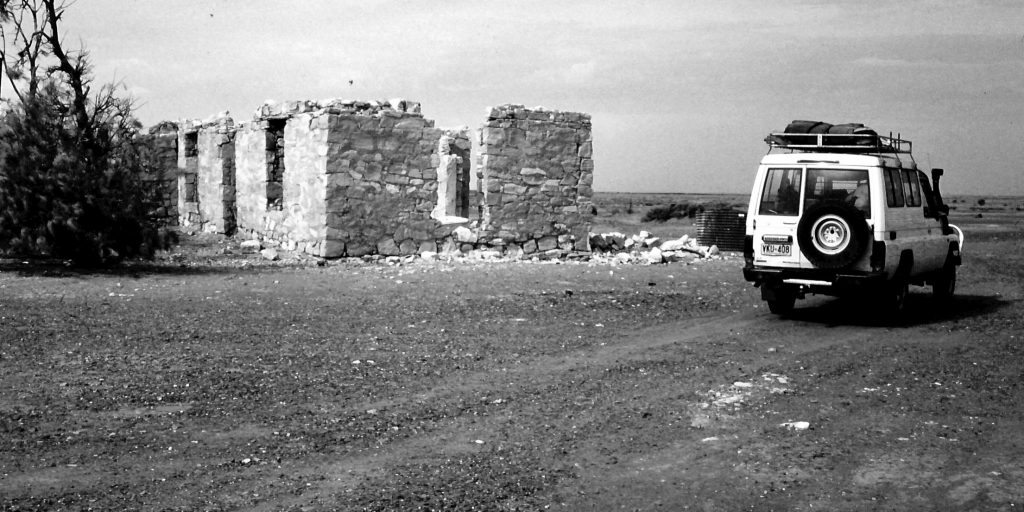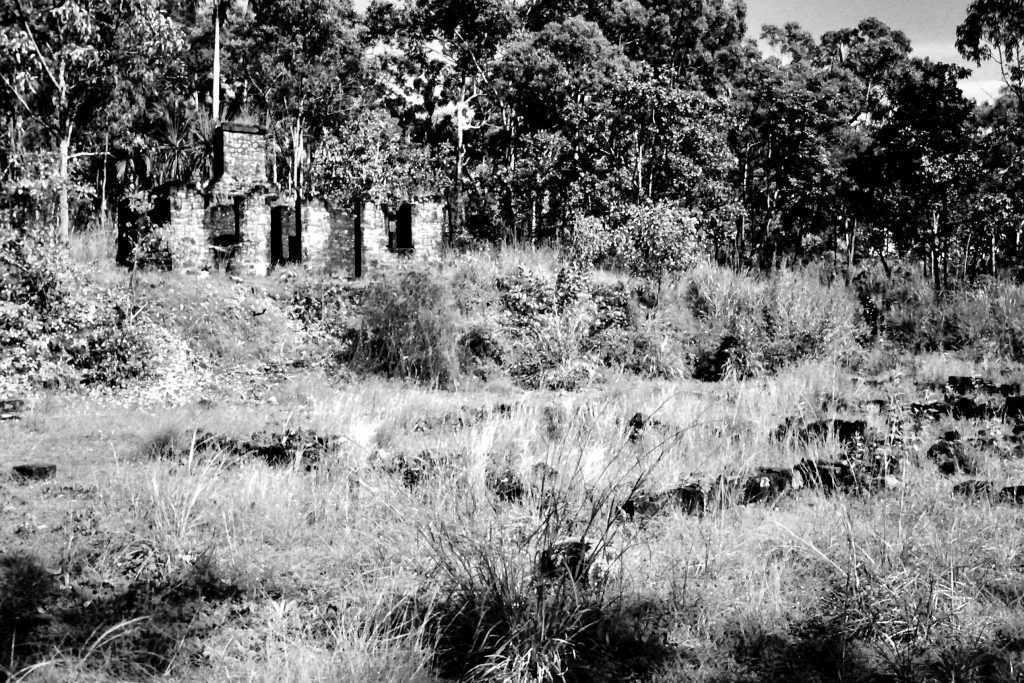Wednesday 14th February 2024 in the Parish Centre
Gwen and Antony Chessell introduced two contrasting talks, one of an adventure in South Australia into Queensland and the other to the far north of the Northern Territory on the Arafura Sea.
Gwen told us about what was supposed to be a round camping trip with brother-in-law, Don, in his well-equipped Toyota Land-Cruiser, stopping at different points on the way, up the Birdsville Track via Cordillo Downs to Innamincka and then back to Adelaide down the Strzelecki Track. It turned out to be something rather different due to heavy rain, wind and mud, adverse conditions marking the end of a long drought.
Leaving Adelaide before dawn, the first 418 miles brought them to Marree, an important junction for two outback tracks, famous as trading routes for Aborigines before European settlement and then for Afghan camel trains and cattle droving. Leaving Marree and starting up the Birdsville Track it was another 500 miles to Birdsville. Gwen touched on the history and cultural beliefs of the Aborigines as she described the Cooper Flood Plain. In the evening, they camped in the bed of Cooper Creek, unpleasant but the only place that offered some shelter. An uncomfortable night in pouring rain forced an early dash to the Mungerannie Roadhouse, the only place for fuel, food and beds on the Track. Here, all sorts of dripping wet and bedraggled travellers appeared out of the gloom. Evidence of the sad story of failed settlement, ruined homesteads and graves was all around this otherwise most welcome haven.
Next day, the rain had eased although the track conditions on the 319 miles to Birdsville left a lot to be desired. Stopping at the Mirra Mitta bore, the importance of the Great Artesian Basin and bore holes were mentioned as was Captain George Sturt’s expedition which did much to open up the outback for settlement, and then through the Gibber Desert. That night was spent in the atmospheric Birdsville Hotel before next morning negotiating the challenging conditions of the Cordillo Downs track to Innamincka. They arrived just ahead of the next rain-storm, the Toyota plastered from roof to wheel aches in mud and the inside of the vehicle a brown twilight. The next day the sun came out and they rested on the banks of Cooper Creek for a couple of days doing a bit of fishing and exploring while dwelling on the tragic tale of the Burke and Wills expedition to cross Australia. Leaving Innamincka, the way home to Adelaide was down the Strzelecki Track through the Cobbler Desert via the Aboriginal Ochre Quarries, to the start of the sealed road at Lyndhurst and the final ‘camp’ for the night in the comfortable quarters of the Parachilna Pub, and thence to Adelaide. The great outback camping trip had turned into the great outback pub crawl.

Then Antony told us of a visit to the ‘Forsaken Settlement’ of Victoria at Port Essington on the Coburg Peninsula in the tropical far north of Australia. This was the site of a British military settlement garrisoned by the Royal Marines and their families from 1838 until 1849 and named in honour of the new Queen, Victoria. It was intended to establish British possession of the north of Australia, to protect traders and trading routes in the area against pirates and foreign competition and prevent any territorial ambitions of the French and the Dutch. There had been two previous attempts to establish settlements on Melville Island and at Raffles Bay, Port Essington. The initial military and civilian population of Victoria was 48 and, during the eleven years of its existence, it remained below 100 except when supplemented by the crews of visiting and protecting ships. At first, the people were housed in prefabricated buildings made in Sydney but, later, the Marines, aided by convicts, constructed stone buildings with the married quarters being in a Cornish style with round chimneys.

The long-abandoned site is situated in a National Park jointly managed by a Board consisting of traditional Aboriginal land-owners who have Native Title and representatives of the Parks and Wildlife Commission of the Northern Territory. Permits are necessary in order to visit the site which is not easily accessible except by 4-WD vehicle or by light aircraft followed by a lengthy boat trip with the aid of a bush guide. Antony described the Wilderness Lodge where they stayed and the deceptive appearance of the apparently tropical paradise with its hidden marine hazards such as crocodiles, box jellyfish, cone snails, sharks and stingrays. The ruined site was described, its history explained and details given of the struggle to maintain the settlement under conditions of heat and humidity which, at times, were almost unbearable for its inhabitants. Expectations were unrealised and malaria and other diseases took their toll with a mortality rate of one-quarter of the garrison and their families. Eventually the Colonial Office decided that no foreign power could take possession of these northern lands without infringing British sovereignty. Also, there was no longer any trading or revictualling reason to maintain the lonely outpost and the decision was made to abandon the settlement; the garrison sailed away on 30 November 1849. The site retains a haunting atmosphere to this day with its forgotten tombs, its crumbling ruins, the encroaching, trailing vines and spear grass, all creating an aura of sadness and desolation. It was a rather sombre return to the Wilderness Lodge, followed by a torrential tropical downpour which added to the subdued mood.
GC/AC February 2024
